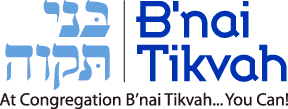Virtually everyone knows that there are Jewish blessings for food. Hamotzi and Borei pri hagafen are among the most recognized Hebrew expressions. In addition to these (and many other) blessings for food, there are numerous blessings in response to natural phenomena—smells, sounds, sights, etc.
One such blessing is of particular importance this week, when we are reading parashat Noach. This parashah includes the story of Hashem using the rainbow as a symbol of promise. When we see a rainbow, we recite this blessing: “Baruch atah ad-nai, el-heynu melech haolam, zocher habrit v’ne’eman bivrito v’kayam b’ma’amaro.” “Blessed are You, Lord our G-d, King of the Universe, Who remembers the covenant, and is faithful to his covenant, and keeps His word.”
The covenant the blessing refers to is the covenant with Noach, in which G-d promises never to destroy the world again. The blessing is therefore one of reassurance: G-d “remembers His promise, is faithful to it, and keeps His word.”
It’s interesting to note that there were reasonable alternatives to this blessing. For example, when seeing something beautiful, like a bride or a waterfall, we recite “Baruch atah ad-nai, el-heynu melech haolam, shekacha lo b’olamo.” “Blessed are You, Lord our G-d, King of the Universe, Who wants it this [beautiful] way in His world.” So why not use this blessing for a rainbow, too?
The answer, I believe, is because of the way G-d used the rainbow. It did not merely appear as a result of light being refracted through the raindrops. By becoming an instrument of holiness to G-d, it ceased being simply an impressive natural phenomenon and was transformed instead into a spiritual symbol of emunah, of trust. Because of that transformation, and that higher significance, it would be a slight to focus solely on the aesthetic qualities of the rainbow.
There is thus a de facto hierarchy of blessings. The first level is one of simple recognition—“the fruit of the tree, the fruit of the earth,” etc. The second level says something more complex about G-d: “whose power and might fill the world,” (to be recited after hearing thunder.). And the third, like our rainbow blessing, reflects the highest levels of sanctity.
One final note: there is an odd but intriguing tradition of not staring at the rainbow, no matter how beautiful it is. This stems from the biblical tradition which likened the imagery of the rainbow to the image of G-d’s divine chariot in the beginning of the Book of Ezekiel. This tradition makes sense when people had an appropriate sense of awe in the presence/Presence of a rainbow. These days, though, our ability to feel awe is greatly truncated—even stunted. So my view is that the more we can experience things that are literally “awesome,” the better. And there’s hardly anything more awesome than a rainbow. As Wordsworth wrote:
My heart leaps up when I behold
A rainbow in the sky:
So was it when my life began;
So is it now I am a man;
So be it when I shall grow old,
Or let me die!
The Child is father of the Man;
And I could wish my days to be
Bound each to each by natural piety.
